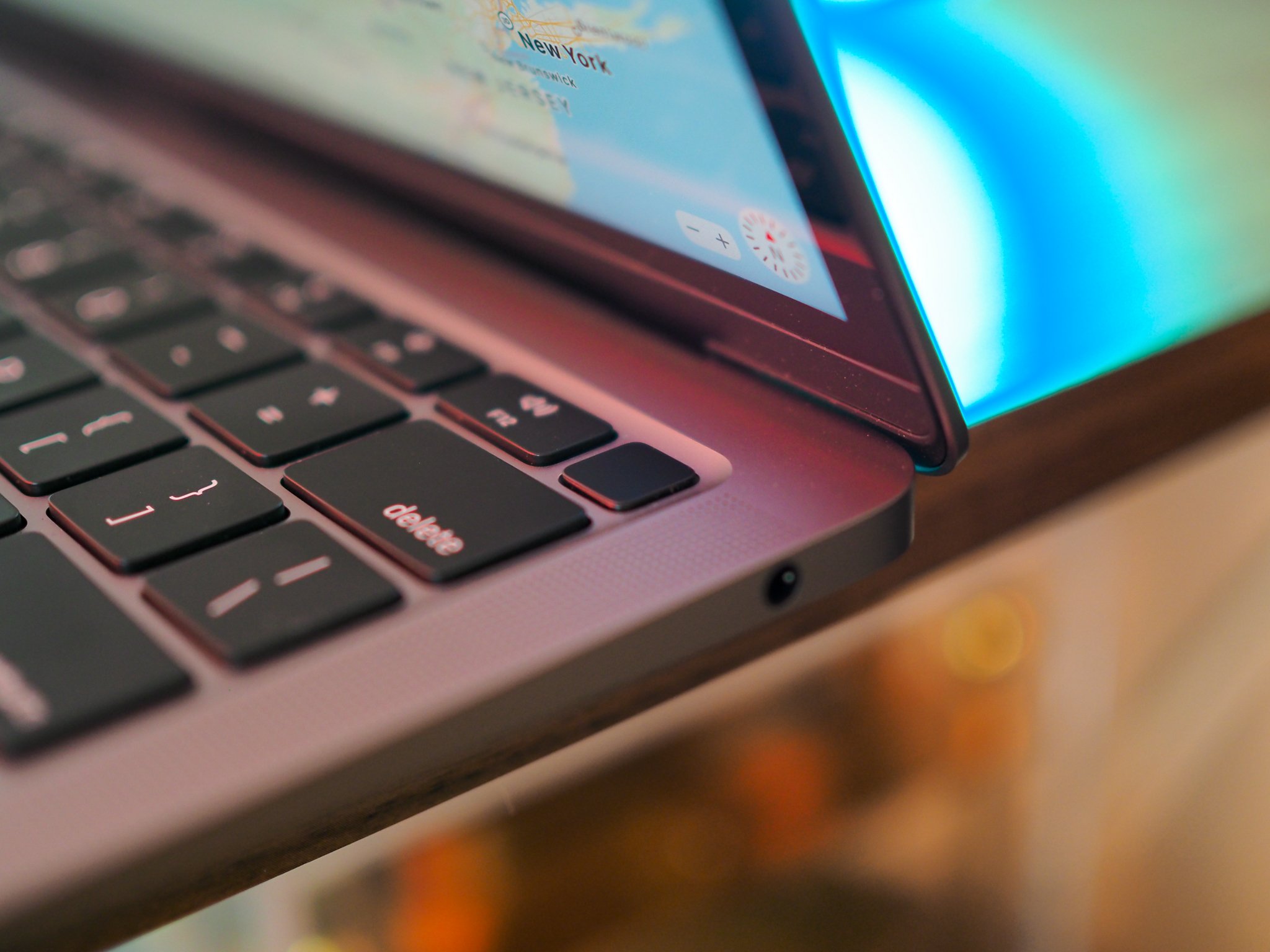Apple patents waterproof MacBook hinge - TechnW3
Has Apple solved one potential weakness of the laptop hinge?
What you need to know
- A new Apple patent has revealed how it could one day release a MacBook that has a waterproof hinge.
- It would involve hydrophobic materials being used around the flexible part of a Mac and the cables which connect the screen to the keyboard.
A new Apple patent has revealed how Apple could one day release a MacBook that has a waterproof hinge.
Whilst Apple's most recent M1 MacBooks are some of the best Macs ever made, liquid ingress and water damage remain an ever-present fear in the mind of any electronic device users. Whilst Apple's iPhone 12 and previous models are water-resistant, Apple has never brought the technology to mobile computing, but a new patent might reveal that all of that could some day change.
A patent filed this week by Apple titled 'liquid ingress control for electronic devices' reveals how Apple could one day stop water and other liquids from damaging a MacBook, by using hydrophobic materials and barriers to shore up the hinge that connects the MacBook's screen to its keyboard. From the patent:
Invasive material ingress mitigation and control features are positioned in a hinge that uses a flexible cable and cable cover at a gap between housings of a portable electronic device. The features include hydrophobic materials on the cover or a cover-facing surface of the device housing, a barrier between the cover and the device housing, channels or protrusions on the cover-facing surface of the top case, a series of different top case surface feature modifications, and a flex cover profile modification that controls and limits contacting surface area between the cover and the top case.
As the patent notes, many electronic devices including laptops have multiple housing sections which require signals to be sent from one to the other, the way a MacBook screen and keyboard are connected, for example. The patent explains:
One challenge associated with a hinged electronic device enclosure is securely routing a signal from one housing section to another housing section. Some electronic devices route a signal transfer mechanism, such as a flexible ribbon-like cable, around the hinge mechanism or through a center hole in a clutch assembly of the hinge. However, these cables must be protected from exposure to users and from over-bending caused by the actuation of the clutch assembly, hinge mechanism, and relative movement of other computer components. As electronic devices get smaller and thinner, the amount of space available for clutch assemblies, hinges and cables is constrained, making it more difficult to provide room for and properly protect the cables. Additionally, ingress of liquids and debris into those tight spaces increases the chance of failures and a degraded user experience. There is therefore a constant need for improvements to cables and hinge assemblies for electronic devices.
The patent basically revolves around a barrier that "can comprise a foam material or a hydrophobic material" attached to the flexible band which is used to hide and protect the cables which run between a MacBook's display housing and the keyboard housing. It can use a foam barrier to stop water and other liquids entering or building up in the area, but also uses channels or protrusions to reduce contact surface area, as well as diverting spillages to designated areas or exits from the housing.
There are, of course, many ways to pour water into a MacBook, so a fully waterproof or water-resistant device would require work around the devices' keyboard, thermal ports, and interfaces, meaning it may never fully be possible. But the patent, filed in August of 2019, could indicate that one day Apple may be able to offers users a bit more peace of mind, if not total waterproofing and protection.
from iMore - Learn more. Be more.
via TechnW3




No comments: